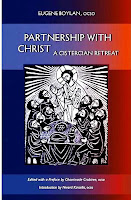Moses was a key figure in the history of Salvation, mentioned over 80 times in the New Testament. His entire life was shaped by and given over to God who, through the Burning Bush, called him to liberate his people from slavery and to bring them to the Promised Land.
The stay of Moses shed light on his relationship with God and gives us some insight into the mystery of who God is.
In today’s First Reading we are presented with a God who is right in the midst his people’s lives.
Not a remote figure unaware of the cruel reality that afflicts them and certainly not content to let things rest as they are. God says: ‘I have seen’, ‘I have heard’, ‘I am well aware, ‘I have come down’. Through Moses we come to realise that God is a God who acts in the lives of his people and intervenes to help them in their needs.
What was it that God saw in Moses that made him the right man to lead his people from slavery to freedom? Prior to the revelation in the Burning Bush we are given three episodes in his life. He saw an Egyptian attacking an Israelite, and he intervened. He saw an Israelite attacking an Israelite, and he intervened. He saw Midianite shepherds preventing Jethro’s daughters from watering their flocks, and he intervened.
All these incidents show us that Moses was the kind of man who couldn’t stand idly when he saw as injustice or a crime happening. We can understand then why God chose him to lead his people from slavery to freedom.
As Moses approached the Burning Bush he was told: ‘the place on which you stand is holy ground’. What was it that made that particular piece of scrubland holy? It was the presence of God. But let us not forget that God is everywhere, and we could say the holiest ground of all is within us.
First of all the body is holy. Our body is the work of God.
But the holiest ground of all is that of the heart. It’s from the heart all our thoughts, words, and deeds flow like water from a hidden spring.
If the spring is clean, then all that flows from it will be clean. So we must try above all to keep the heart clean and pure. It is especially on this holy ground that we will see and meet God. In the words of Jesus: ‘Blessed are the pure of heart, they will see God’.
Today’s parable, from St. Luke, has been called ‘the parable of the second chance’ because it teaches that God offers people a second chance, as the apostles Peter and Paul could testify. The gardener tells the owner of the vineyard that it is necessary to give the fig tree another chance to bear fruit. With nourishment and care something may come from the life of the tree.
When Jesus tells us to repent he doesn’t mean that we should be walking around beating ourselves in public. In the NT the word translated as repentance is the Greek word metanoia. The word means a change of mind and change on conduct. Lent is an opportunity to new beginnings for ourselves, and perhaps we should take the opportunity to give one a second chance.









